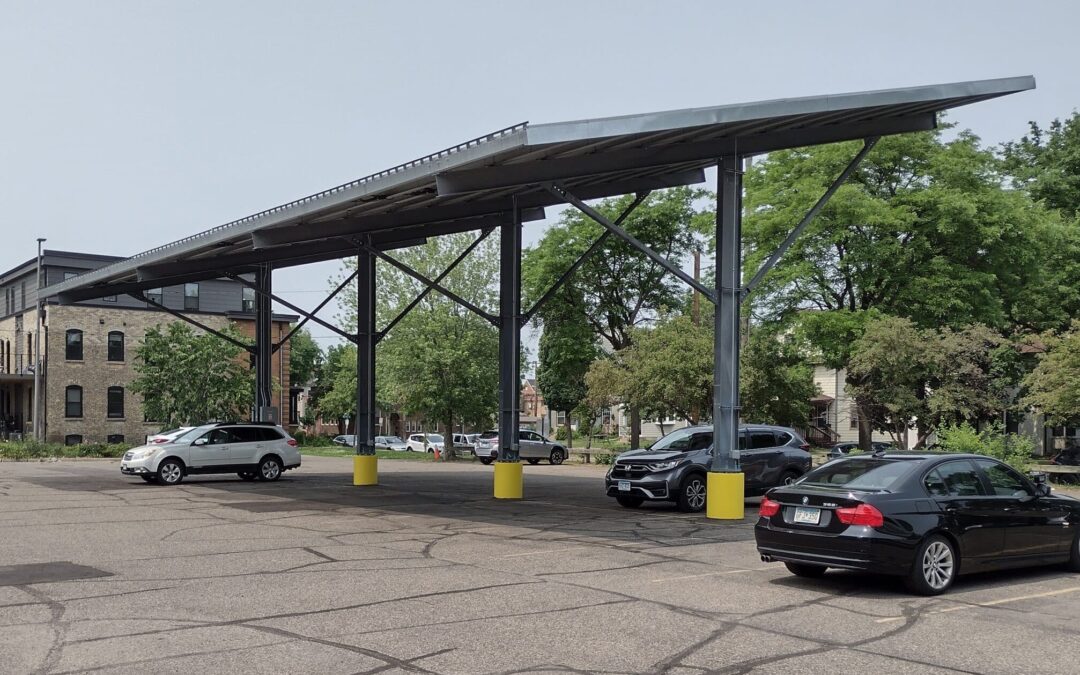Proposal for a Solar Array in the Parking Lot
At the recent Semi-Annual Meeting on Sunday, June 25, the Congregation voted to authorize our leadership to enter into agreements to install a solar array on the campus of Prince of Peace. Included here are most of the known details and answers to some of the questions you may have about this project.
Proposal Summary
In partnership with local contractors, we plan to construct a carport-style structure in our parking lot to support a solar array, sized to generate electricity comparable to the average annual amount consumed by the existing PoP facilities. In concept, though we remain connected to the power grid, this would essentially make our church 100% solar-powered.
Two examples of comparable nearby installations:
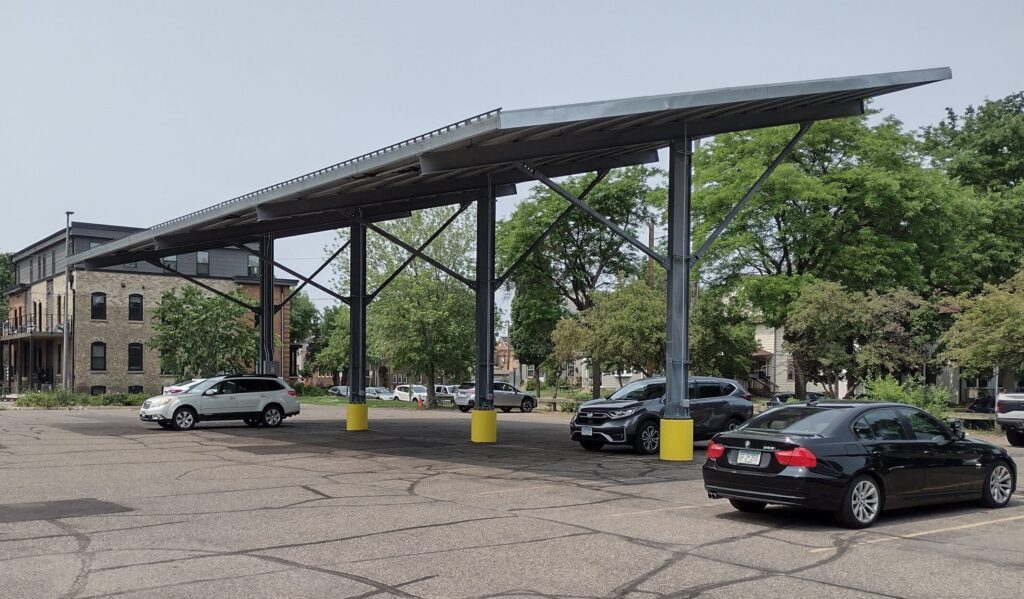
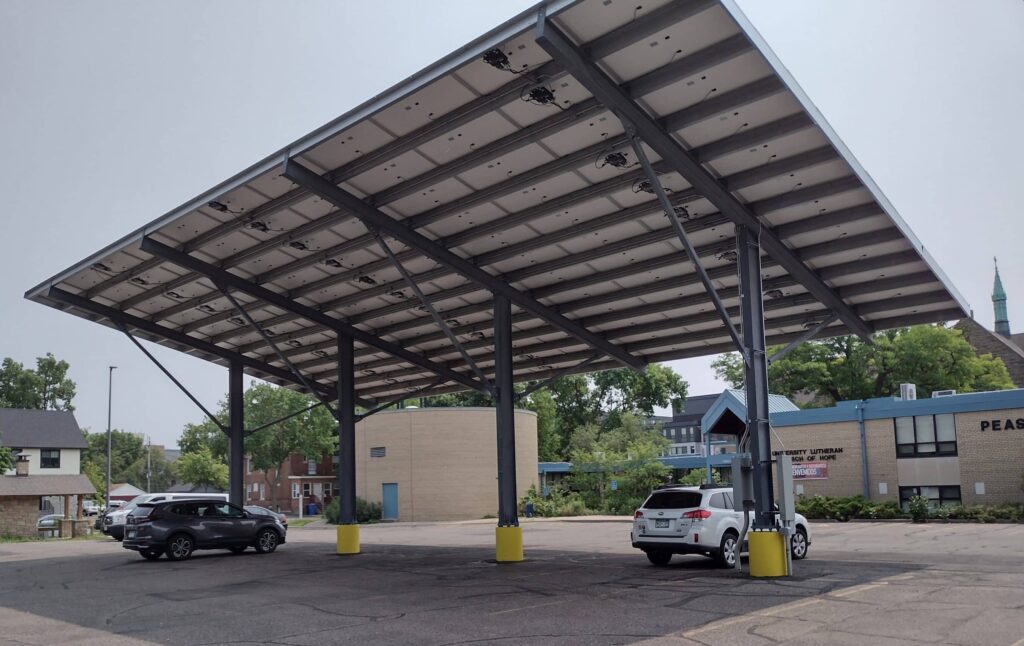
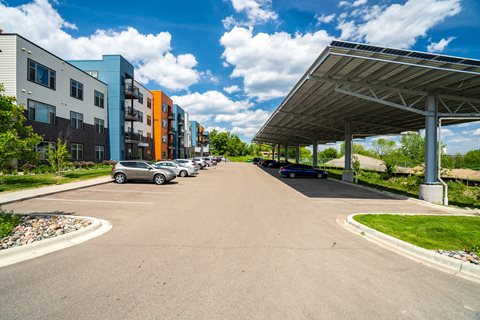
Proposal
Upon congregational approval, PoP will sign a Letter of Intent with Apadana Solar Technologies (AST) to “negotiate in good faith toward implementation of a Power Purchase Agreement (PPA)” under which a third-party investor will purchase, own, and operate a solar PV system on PoP property for 25 years. PoP will purchase the electricity generated by the solar system at a discount (approx. 10%) from standard rates during the 25 years. After 25 years, PoP will own the system and all the power it will continue to generate.
Project Cost
- $0 ($160,000+ will be invested by a 3rd party who receives tax credits & incentives)
- Total Projected Electricity Savings for years 1-25: $28,000 (average $1,120/yr)
- Total Projected Electricity Savings years 26-30: $91,500 (average $18,300/yr)
Proposed System Specifications:
- Size: 76.3 kW, 140 PV panels, approx. 37.5’x105’
- Hardware: Monocrystalline 545 Watt Bi-Facial ZNShine Tier 1 Panels or equivalent, SolarEdge Inverters and Power Optimizers, Custom Carport Racking
- Warranties: Panels – 30yrs, Inverters – 20yrs, Optimizer – 25yrs, Racking – 5yrs
- Maintenance & repair remains responsibility of AST & the 3rd party owner for 25yrs.
Location, Amenities & Additional Costs
AST Engineers will consider a design that places the structure over the center two rows of parking in the main/south parking lot, opposite the entryways. The supporting columns would be in a line, east to west, along the center line of the parking rows, maintaining all existing parking spaces. The carport would provide a shaded area over the space we have been using for outdoor worship and events for the last 4 years. This location would also provide opportunity to collocate new lighting for the most used area of the parking lot during the darker afternoons and evenings of the winter months. It is also possible that we could collocate permanently mounted outdoor speakers on the structure for use during worship and events.

A suitable design for the south lot might incur costs beyond the scope of the solar development. The added costs for this location, along with the other amenities will not exceed $20K. If feasibility and costs demand, a second possible location would be located along the eastern edge of the west parking lot. This location would likely not include the lighting or sound amenities.
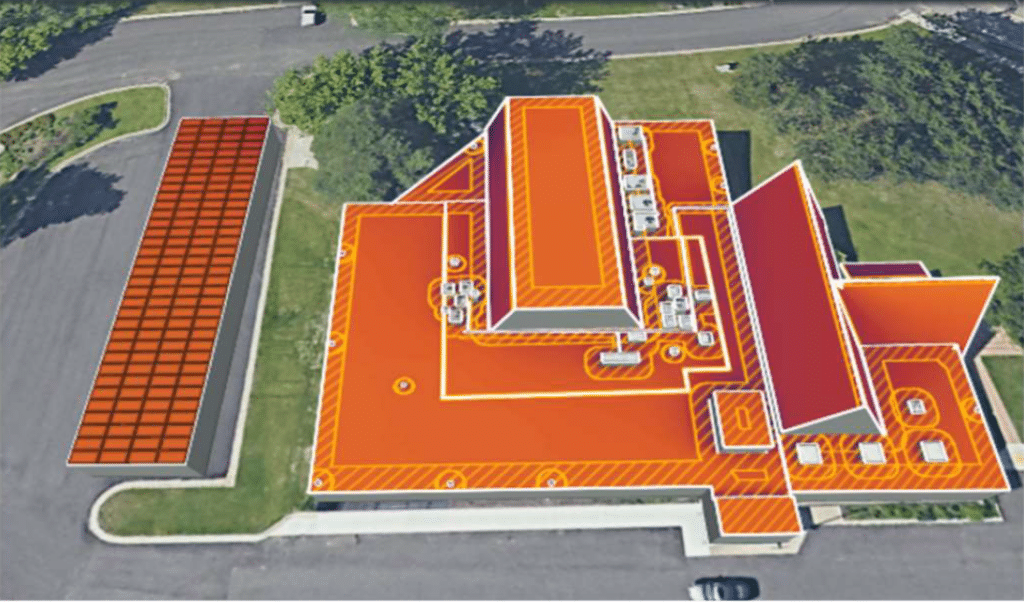
History
Over the course of the past 7+ years, James Ericksen, Russ Stolle, and other interested congregants, have explored how PoP might add a PV solar array to generate electricity from the sun. Much of these explorations focused on roof-top installation. We found a supportive partner with Interfaith Power & Light (IPL), an NGO that specializes in connecting faith communities with solar contractors.
Once the new roofing was installed over the flat portions of the building in 2022, we returned to IPL to explore possible next steps. IPL returned with two options, incorporating the latest technologies and available funding mechanisms. Both options involved working with Apadana Solar Technologies (AST), a local solar design and construction firm. One proposal utilizes a rooftop installation design, while the other incorporated a carport-style installation. Two financing options were also proposed, one where PoP funds the $160,000+ project with an 8.24% rate of return after a 12.5-year payback. The second option is a proposed here, using a 3rd party to fund the development and maintenance costs for 25 years and with a discounted annual rate.

The Campus Planning Task Force reviewed both proposals on June 5 and made a recommendation to the Congregation Council that we bring forward this proposal to the full congregation for an authorization to proceed. The council reviewed the proposal on June 13 and voted to bring this proposal to the June 25 Semi-Annual Meeting.
Commonly Asked Questions
Why are we doing this?
Because it’s the right thing to do. This church believes in its responsibility to be a prudent steward of the gift of creation and this environment within which God has placed us. Fossil fuels continue to contribute to the warming of the planet. The opportunity to convert our power consumption to a primary reliance on renewable energy will be a visible and tangible witness for how God’s people might respond to the compelling need for reversing the effects of climate change. After so many years of talking about using the sun shining on our property, it’s long past time we act.
How big will it be?
The system will include 140 panels that are approximately 3.75’x7.5’. The array will be 5 panels wide by 28 panels long. This will make the carport approximately 37.5’ wide by 105’ long. There will likely be 4-5 supporting columns. The roof is sloped slightly down to the south where the lowest edge will be 13’ off the ground, comparable to the height of the entry atrium of the church.
More importantly, the 140 panels are estimated to generate 88,636 kWh in its first year. This is118% of the power we historically use at PoP. Over 30 years, 2,455,240 kWh of solar power generated means 1,815,650 lbs. of CO2 weren’t pumped into the atmosphere, which is equivalent to 28,704 trees growing for 10 years. There are about 100,000 trees in Roseville, so this would be equivalent to adding 30% to our CO2 reducing capacity. That’s quite a difference for our neighborhood!
If this will generate more electricity than we use, do we have to stay connected to “the grid?”
Yes. Our system will only be generating power when the sun is shining but we need power 24 hours a day, every day of the year. Actually, we will still “buy” all the kWs we need to power our facility from Xcel. All the electricity we generate will go to Xcel and they will give us “credit” for all the kWs we generate (up to 120% of how much we use, calculated annually). We will also then buy the power we have received credit for from the 3rd party investor, with a 10% discount. The discounted power we buy plus the tax incentives and other rebates is how the investor makes a return on their investment.
Will we have to tear up our new parking lot?
In the locations where the support columns will be located, the pavement will be cut out to pour concrete anchoring foundations. If an electrical conduit from the building out to one of the carport columns cannot be bored underneath, one trench will need to be milled out and patched.
How will winter weather affect the solar panels, carport, and parking lot?
The projected power generation includes a conservative estimate for how often the panels may be covered by snow. Experts do not recommend clearing snow off PV panels because the potential for damage is too great. They are black and the sun’s warmth, even in winter does quick work of naturally evaporating and melting off the snow. Our snow plowers will have little trouble clearing under the canopy and should easily avoid the row of supporting columns. Our colleagues at University Lutheran Church of Hope report that they have had little impact from rain, snow and ice buildup with their carport installation, which has a comparable size and orientation to what is being proposed here.
How much will this cost Prince of Peace?
The short answer is NOTHING and we’ll even save a little. Here’s the longer answer… A 3rd party investor will pay for the design, construction, and maintenance of the carport & solar array and long as we agree to purchase all the power it will generate over 25 years. We will purchase that power at a 10% discount. We will also continue buying an additional electricity we need from Exel Energy, especially in the winter months. After 25 years, we will own the equipment and will receive full credit for all the power it generates. But we will also be responsible for maintaining and replacing the 25yr old equipment at that point too.
We did consider the option of paying for the $160,000+ installation ourselves. Had we done this, we would have received full credit for all the power it generated and saving enough from reduced electricity charges to pay back our investment after 12.5 years. These projections could be interpreted to generate a 8.24% rate of return over 30 years. But, as the owner of the system, we would also be responsible for all repair and maintenance costs and all the equipment warranties expire well before 30 years.
Given the variety of exciting possible projects our campus planning team is considering right now, they elected to keep whatever internal financing capacity we have, available for other projects. The Congregation Council also discussed the host of building related concerns and deferred maintenance projects that may be capital intensive in the near future so this 3rd party financed strategy felt like the prudent way to proceed while still accomplishing our goals.
If the project cost is $0, why is there also $20,000 mentioned in the motion to authorize this project?
Because we would benefit most by having the carport located in the south lot. Given this location’s distance from the main electric panel, there may be added cost that the financing may not cover. Also, we are interested in collocating lighting for the parking lot on this structure as well as possible outdoor speakers for use during worship and other outdoor events. The potential costs for these added amenities is not included in the proposal from AST and funded by the 3rd party.
Do these local solar projects inflate electricity pricing for other customers (versus relying on larger commercial solar farms)?
We would hate to think our project could negatively affect our neighbors and the good news is that it won’t. It’s a bit confusing because it seems like if Xcel has to buy our electricity at market rates but the power they buy from solar farms is at a lower, wholesale rate, won’t that drive up the costs users pay? Ultimately, electric utility companies like Xcel need to invest in all forms of renewable energy. Every renewable project, no matter how small, creates benefits for both the consumers and the industry. Xcel is incentivized to help us make this change and the more renewable energy we create, the more our neighbors will benefit. IPL provided us with these points to help clarify:
- Local projects are capped at 120% of usage. Therefore, a maximum of 20% of any solar system becomes a net cost for Xcel. And this 20% diminishes over time because the panels degrade. Furthermore, many properties do not have the space to build systems that will produce even 100% of their electricity usage.
- All local projects, regardless of the size system and how much electricity they offset, still pay a demand charge, thus contributing proportionally to the upkeep and expansion of the electrical grid.
- As more and more solar comes online, whether it is local, community solar gardens, or Xcel owned, all costs will go down (and thus all costs should go down). Solar is less expensive than natural gas or coal, so all electricity generation that switches from these more expensive fuels drives down cost.
- Finally, though not a huge factor, Xcel is required to produce or purchase Renewable Energy Credits (RECs), and to the extent that they do that in Minnesota with local energy projects with their incentive structures, that is money that is staying in our state, not going to other states.
Now that the project has been authorized by the congregation, what happens next?
A “Letter of Intent” between PoP and AST will be signed. AST’s engineers will work through the variety of details to design the installation and determine the feasibility of the various elements. PoP project leaders will work closely with the design engineers to address all the surrounding concerns and possible benefits. Once a comprehensive design and financing plan is in place, PoP leadership will finalize the project authorization and AST will begin with construction. It’s hopeful that work will commence and bee completed before the end of this year.
In the event that a suitable design or financing plan cannot be agreed upon, the Letter of Intent stipulates that PoP will reimburse AST for up to $2400 of design and engineering related expenses. If the project proceeds, all associated costs remain included in the project financing plan.

